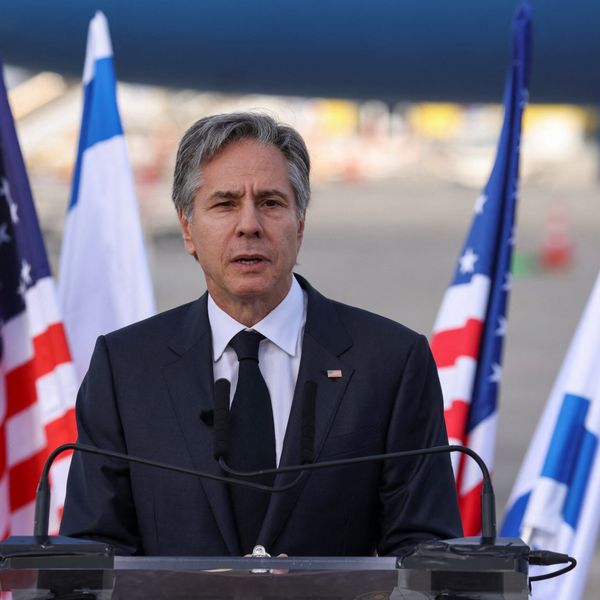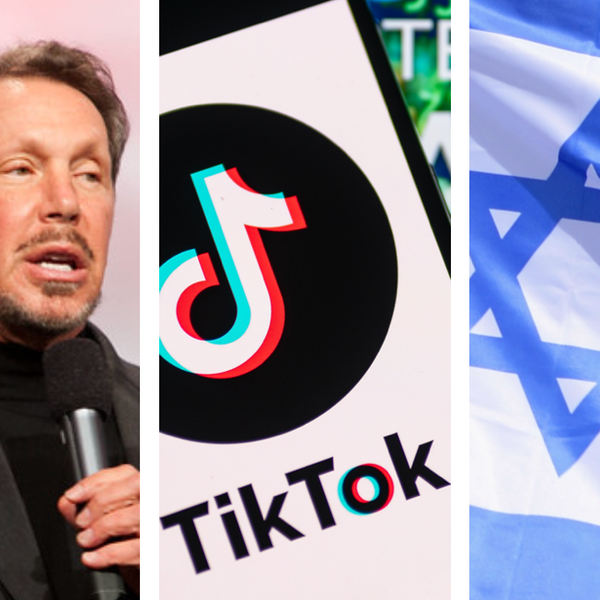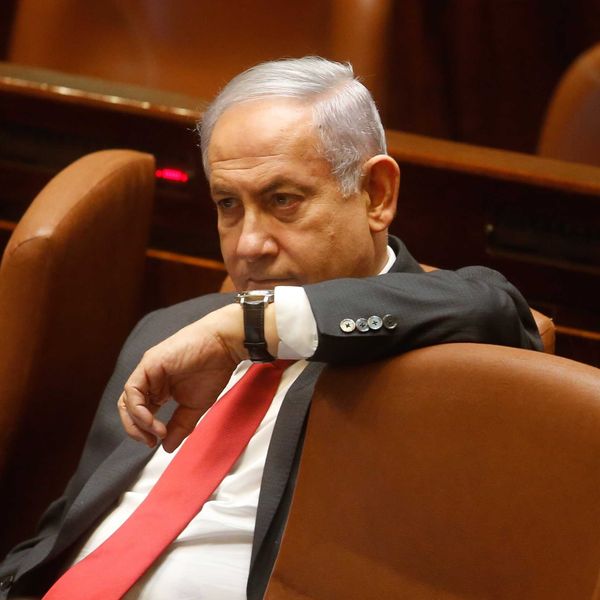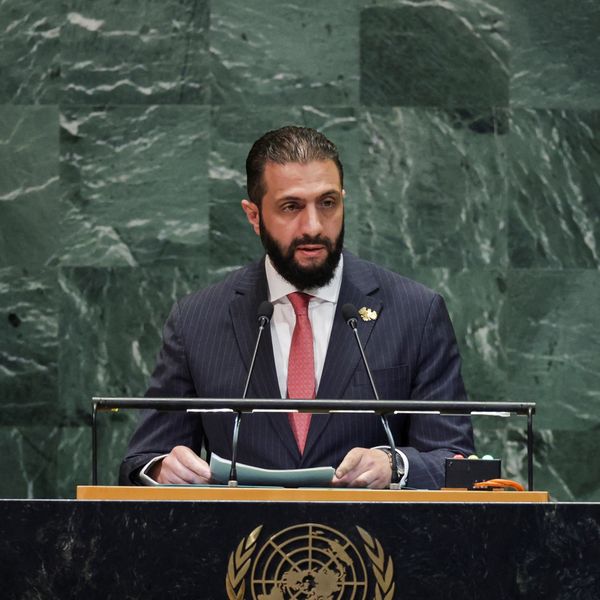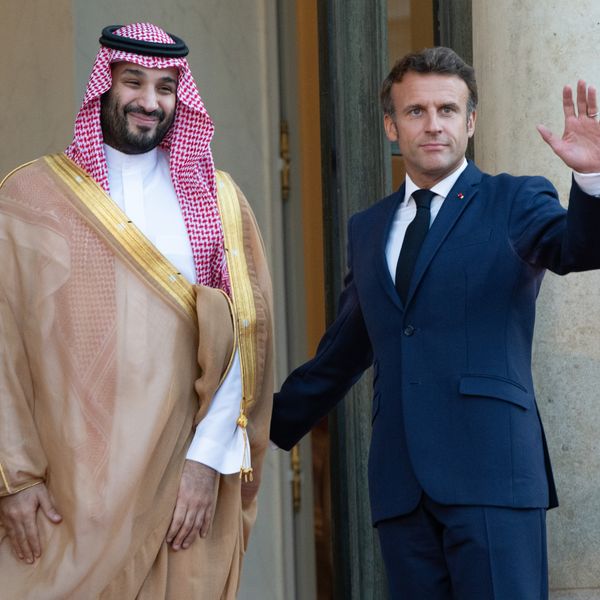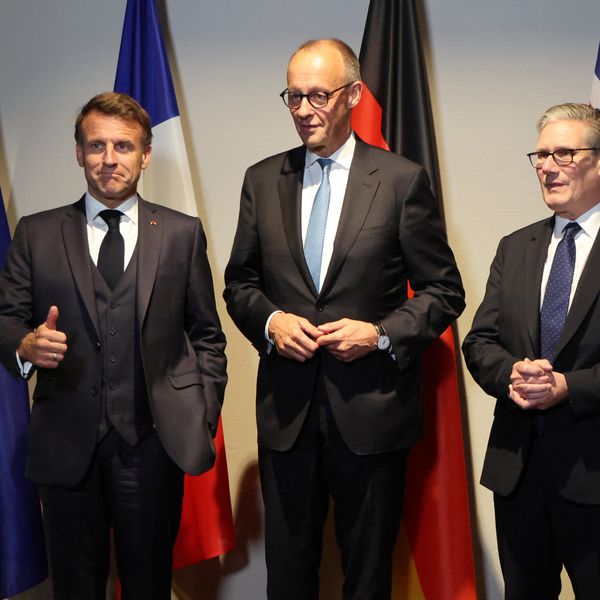During his joint press conference with Israeli Prime Minister Benjamin Netanyahu on Monday, President Donald Trump announced a new plan that he said is “getting everything solved in the Middle East.”
Unfortunately, the plan appears designed to once again portray Palestinians as opposing an end to the violence, as Americans involved in the Israel-Palestine conflict have done for decades.
If Trump wanted Hamas to agree to the deal, he would have sent it to them before presenting it as a fait accompli. Yet as of Saturday, Hamas leaders said they had not received the proposal. Yet Trump proceeded with announcing the plan publicly anyway. During the press conference, he said that if Hamas rejects the deal, “as you know, Bibi, you have our full backing to do what you would."
The plan includes the following points:
- A permanent ceasefire in Gaza
- The release of all Israeli hostages and many Palestinian hostages, including all women and children detained since October 7
- Gradual Israeli withdrawal from most of the Gaza Strip, although a security perimeter would remain, further shrinking the already tiny enclave
- Hamas members that agree to give up their weapons would be given amnesty and permitted to leave Gaza for receiving countries
- Gaza would be governed by a temporary mechanism that includes both Trump and former UK Prime Minister Tony Blair
- Palestinians would not be forced to leave, and anyone who leaves would have the right of return
In point #19, the plan provides a provisional mention of Palestinian self-determination, stating, “while Gaza redevelopment advances and when the PA reform program is faithfully carried out, the conditions may finally be in place for a credible pathway to Palestinian self-determination and statehood.” Essentially, Palestinians are asked to accept foreign occupation and full disarmament, with no guarantee that Israel’s campaign of indiscriminate bombing will not resume, nor that their right to self-determination will be respected.
On Friday, Trump sounded optimistic, declaring that “[i]t's looking like we have a deal,” after a meeting with nine Arab and Muslim-majority countries on the sidelines of the U.N. General Assembly resulted in support for the plan. The Arab states insisted on several points, including that “full aid will be sent immediately into the Gaza Strip,” to be distributed by the U.N. and the Red Crescent, rather than the Gaza Humanitarian Foundation, which has been involved in the deaths of more than 2500 Palestinians since beginning operations in May.
The Arab states also demanded the plan state that Israel would not annex Gaza or the West Bank, but the 20-point plan makes no mention of the West Bank. While buy-in from regional states is important, even more important is buy-in from Palestinians, who were not present at the meeting.
Trump’s Middle East Envoy Steve Witkoff and son-in-law Jared Kushner drafted the plan, discussions of which have included a proposal to have Blair oversee the Gaza International Transitional Authority. Critics have described the former British prime minister as seeking to become a colonial viceroy: when asked about the possibility of Blair serving as the interim political leader in Gaza, Husam Badran, a member of Hamas’ political bureau, told Al-Jazeera, “The Palestinian people have the right to self-determination, as recognized by international law. We are not minors needing guardianship…[Blair’s] bloody record, especially his role in the Iraq War, is infamous. He has brought nothing good to Palestine, the Arabs, or the Muslims.”
While many supporters of Palestinian self-determination decry the Witkoff-Kushner plan as intended to yet again sideline Palestinian demands for a viable state, many inside Gaza are desperate for an end to the violence. The Israeli military continues to force its way into Gaza City, leveling residential buildings and killing countless innocent civilians who were unable to flee. Although Israel has allowed limited food to enter Gaza, it continues to block crucial supplies, including high protein peanut butter paste desperately needed to save starving children, as U.N. Relief Chief Tom Fletcher told CNN’s Christiane Amanpour on the sidelines of UNGA High Level Week.
Netanyahu’s willingness to agree to even a nominal ceasefire plan generated speculation about whether Trump was finally pressuring him to accept, as he did to secure the January ceasefire. According to a recent poll, a majority of Israelis want the war to end in order to finally achieve the release of the Israeli hostages. Israel’s own security establishment has concluded that there is no military solution in Gaza, and last month, Israel’s Chief of Staff, Lt. Gen. Eyal Zamir, opposed the security cabinet’s demand that the IDF fully occupy Gaza, and questioned the plan to take control of Gaza City.
Yet Netanyahu’s far-right coalition partners oppose any ceasefire plan, maintaining that Israel must achieve “total victory” over Hamas. An Israeli newspaper reported that Netanyahu’s “challenge is to convince ministers that this [plan] is nothing more than rhetoric.” Similar to when he agreed to the January ceasefire, Netanyahu has no intention of ending Israel’s war on Gaza.
Americans’ support for Israel has plummeted in the past two years, with a majority now opposed to sending additional economic and military aid to Israel, according to a newly released Times/Siena poll.
Trump is aware that his party’s unconditional support for Israel is splintering his base. By announcing this plan in a manner that appears largely intended to portray Israel as ready for peace and Hamas as obstructing the deal, he seems determined to reinforce the long-standing Israeli/American narrative that there is “no partner for peace” on the Palestinian side, meaning that Israel must reluctantly continue fighting. When in fact, Hamas has offered multiple deals to end the war which Israel has rejected. With the recent sale of TikTok to pro-Israel billionaire Larry Ellison, Trump seems to think he can wrestle back control of the narrative.- Another poll shows Americans’ declining support for Israel ›
- Trump appears all in for Netanyahu's political survival ›









